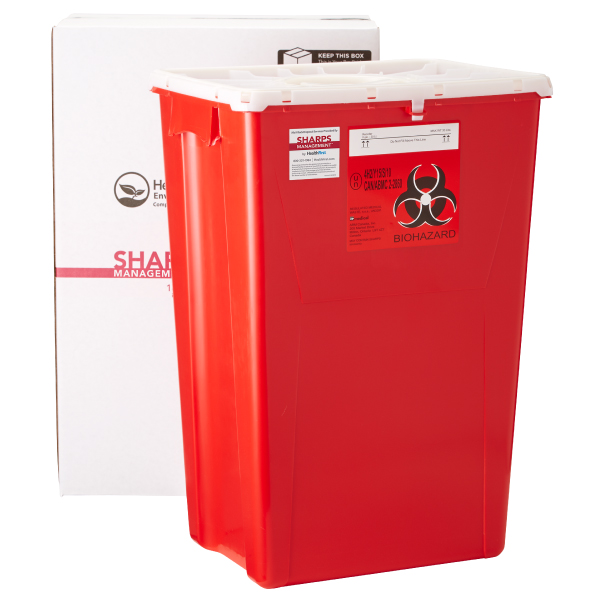Neighborhood Dedication: Your Area's Leading Medical Waste Removal Near Me
Understanding the Various Sorts Of Garbage Disposal Methods
In the world of waste management, the selection of disposal strategies available today is huge and varied, each approach serving a distinct objective in dealing with the obstacle of waste disposal. click here. From reusing methods that aim to offer new life to products, to the complex processes of unsafe waste management, the landscape of garbage disposal is complex yet essential for ecological sustainability. Recognizing the subtleties of these different strategies not only sheds light on the significance of accountable waste monitoring yet additionally triggers us to reassess our technique towards waste disposal in a swiftly advancing world

Recycling Methods
Reusing techniques are crucial for sustainable waste monitoring practices in both commercial and residential setups. medical waste removal. By applying reliable recycling techniques, a significant amount of waste can be drawn away from land fills, conserving natural deposits and lowering the ecological impact of manufacturing procedures
In property locations, curbside recycling programs play an important duty in encouraging households to separate recyclable products from general waste. Materials such as paper, plastics, glass, and steels can be sorted and collected for processing right into new items, lowering the requirement for raw materials and energy-intensive production procedures.
Industrial centers additionally depend on recycling methods to minimize waste generation and advertise a circular economy. By executing closed-loop systems, services can recycle products within their manufacturing procedures, minimizing costs and environmental footprint. medical waste removal. Furthermore, commercial recycling programs frequently involve collaborations with specialized reusing centers to make sure that materials are correctly sorted, refined, and rehabilitated right into the supply chain
Composting Strategies

Aerated fixed stack composting involves mixing organic waste products in a huge pile and on a regular basis turning it to make sure appropriate aeration. This technique is appropriate for smaller-scale procedures and families.
In-vessel composting involves positioning organic waste in a shut container with regulated conditions for temperature and aeration. This method works for handling food waste in metropolitan locations. Windrow composting consists of creating long rows of natural waste and consistently turning them to promote disintegration. This strategy is commonly utilized in agricultural settings.
Land Fill Disposal
Landfill disposal is a generally used approach for managing waste that can not be recycled or composted. Methane gas, a result of disintegrating natural waste in land fills, is usually collected and made use of as a source of eco-friendly power. Efforts to reduce dependence on garbage dumps consist of advertising waste decrease, reusing, and discovering different waste disposal approaches to minimize the environmental footprint associated with traditional land fill disposal techniques.

Waste-to-Energy Incineration
Incineration of waste for power generation is a method increasingly being thought about as a choice to traditional garbage dump disposal methods. Waste-to-energy incineration includes the combustion of waste materials at heats, usually in specialized facilities developed to generate power or heat through the process - click here. This method not only minimizes the volume of waste that would certainly or else be predestined for land fills but additionally uses the warm produced during incineration to create power
One of the crucial benefits of waste-to-energy incineration is its capability to generate electrical energy while lessening the environmental effect compared to conventional land fill disposal approaches. By transforming waste into energy, this technique aids in reducing greenhouse gas exhausts and dependence on nonrenewable fuel sources for energy generation. Furthermore, waste-to-energy centers are geared up with advanced air contamination control modern technologies to reduce possible toxic wastes released throughout the combustion process.
Contaminated Materials Management

Thinking about the important importance of liable waste monitoring practices, particularly in the realm of ecological sustainability, the focus now moves in the direction of the intricate domain name of Contaminated materials Management. Dangerous waste postures considerable threats to both human health and wellness and the atmosphere, necessitating specialized handling and disposal strategies. Common instances of contaminated materials include chemicals, batteries, pesticides, and electronic waste.
Contaminated materials Monitoring involves the recognition, collection, transport, therapy, and disposal of materials regarded hazardous or possibly hazardous. This process calls for adherence to stringent laws and standards to mitigate adverse influence on ecological communities and public health and wellness. Different approaches are employed in handling dangerous waste, consisting of recycling, secure landfills, encapsulation, and chemical treatment.
Appropriate Unsafe Waste Administration is vital for protecting against contamination of soil, water sources, and air pollution. It is essential for sectors, labs, medical care centers, and other generators of contaminated materials to implement robust management methods, training programs, and emergency feedback plans to make certain the secure handling and disposal of these products. Failing to handle hazardous waste appropriately can have far-ranging consequences, highlighting the significance of accountable and attentive practices in this area.
Final Thought
In conclusion, waste disposal techniques play an essential function in managing and reducing the effect of waste on the setting. It is important for industries and people to recognize the different waste disposal techniques available and select the most proper technique for lasting waste monitoring.
In the world of waste management, the selection of disposal strategies available today is vast and differed, each approach serving a distinctive function in resolving the important source obstacle of waste disposal. click here. From reusing approaches that aim to offer new life to materials, to the complex processes of hazardous waste administration, the landscape of waste disposal is intricate yet vital for ecological sustainability. Recognizing the subtleties of these various techniques not just sheds light on the importance of responsible waste monitoring however also motivates us to reassess our technique towards waste disposal in a swiftly advancing world
Efforts to reduce reliance on land fills include advertising waste reduction, recycling, and checking out different waste disposal approaches to decrease the ecological footprint associated with standard garbage dump disposal practices.
It is vital for individuals and sectors to comprehend the various waste disposal techniques readily available and select the most appropriate technique for sustainable waste monitoring.